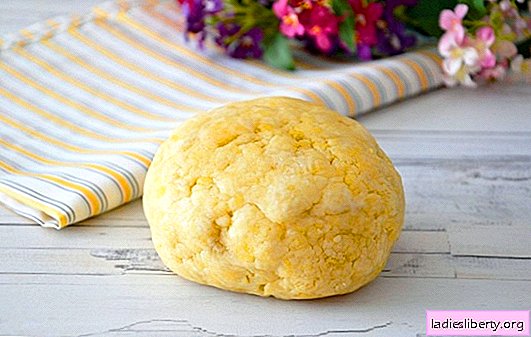
Strawberry "Gigantella" is more popular than other varieties. That is what summer residents want to grow on their sites. Let's find out why this variety is remarkable.
The story of the creation of the variety and the region of growing strawberries "Gigantella"
Grade "Gigantella" migrated to us from Holland. It is not known for certain who is its author. It is only clear that the breeders wanted to create a large-fruited strawberry variety that would surprise everyone with its appearance and taste. And they succeeded!

A guest from Holland feels good in temperate regions where mild winters and hot summers are. However, today Gigantella is grown throughout Ukraine, Belarus and Central Russia.
Important! The variety is intended for open ground. "Gigantella" is not a maintenance species and is not suitable for year-round cultivation in greenhouses or at home.
Characteristics of the Gigantella Strawberry Variety
Strawberry "Gigantella" refers to early ripe varieties. Flowering of bushes begins at the beginning, less often in mid-May. It depends on the region of cultivation. Harvested 2-3 weeks after flowering.
Despite the love of heat, with good shelter, the variety tolerates severe frosts. He is not afraid of lowering the temperature to -30 ° C. However, spring frosts can destroy all peduncles. To avoid this, do not rush to reveal strawberries. "Gigantella" blooms well and bears fruit even under a layer of agrofibre.
One of the advantages of the variety is its self-pollination. Strawberries do not need pollinating insects, berries are tied in any weather. This fact indicates a high and stable yield of the variety. From one bush you can collect up to 5 kg of berries. The peak yield occurs in the third year of cultivation. Strawberry fruiting remains stable for more than 6 years, after which the variety needs to be updated.
Despite this, the variety has its drawbacks.:
• bushes are prone to disease;
• berries are often affected by pests;
• the variety is picky about the soil.
Based on the foregoing, we can conclude that the variety "Gigantella" requires special care and constant care.
Description of bushes and berries of Strawberry "Gigantella"
Gigantella bushes are large, not rarely grow more than 50 cm, spreading. The leaf cover is powerful, rests on tall petioles. The leaves are wrinkled, corrugated at the edges, light green in color. Peduncles long, strong, well withstand the weight of berries.
Strawberry fruits are very large. The first berries reach a mass of up to 100 gr., The subsequent ones grow a little less. Strawberries beautifully shaped, ribbed, heart-shaped, saturated red, with an abundance of white seeds. The strawberry pulp is dense, moderately juicy, due to which the fruits tolerate transportation well.
The taste of strawberries "Gigantella" on top. The fruits are sweet, but not sugary. They have a pronounced aroma of pineapple.
Gigantella berries are suitable for fresh consumption and all types of processing. Perfectly retain their shape in winter blanks. Fresh strawberries are stored in the refrigerator for no more than three days.
Proper planting of strawberries and the features of cultivating the variety "Gigantella"
Gigantella is grown on clay soils with a low level of acidity. Remember that large bushes are planted at a distance of at least 30 cm. Up to 4 plants are placed on one m2.
Important! This variety can be grown carpeted, if the territory allows.
The timing of planting young bushes depends on the region of cultivation. Both autumn and spring planting is allowed. In autumn, bushes are planted from early August to the end of September. In spring, strawberries are planted immediately after the snow melts.
Choose a well-lit area, you can in direct sunlight. Special preparation of the site is not required, it is enough to dig deep enough, remove weeds and apply organic fertilizers.
Bushes can be planted next to the berry, but they can not be placed with garlic and onions. Also avoid planting strawberries next to hot peppers.
During planting, you can not deepen the "heart" of the bush. Immediately after planting, the beds are mulched with humus or straw and watered abundantly. How to plant strawberry seedlings is shown in the photo.

How to care for Gigantella strawberries so that the variety bears fruit and does not hurt
It’s not difficult, but necessary, to take care of Gigantella. The bushes grow greatly, give a lot of mustache, so they need to be removed on time.
Watering strawberries
Soil moisture must be monitored. In the first two weeks after planting, the garden is watered every day until the plants take root. Subsequently, strawberries are watered once a week.
Advice! Do not forget to mulch the soil after watering, otherwise the strawberries will begin to rot.
Feeding rules
To collect a good strawberry crop, you must not forget about top dressing. Grade "Gigantella" needs to be fertilized before fruiting and after it. The first time the bed is watered with sodium sulfate and nitrophos. The second time they feed wood ash and nitrophos.
Pruning and preparation for winter
After harvesting, all old leaves are cut from the bushes, leaving only the "heart". Plant residues are collected from the beds and burned. The soil under the bushes is well loosened, then abundantly watered and fertilized.
By autumn, new leaves will grow on the bushes, with which strawberries will winter. They do not need to be removed, they will serve as a kind of shelter.
Important! Do not neglect pruning foliage, this procedure helps get rid of diseases and pests.
Protection against diseases and pests on strawberries
Grade "Gigantella" is extremely unstable to fungal diseases. For prevention, planting is treated in spring and autumn, after pruning. Spraying is carried out with Fitosporin or another fungicide. You can use a 2% solution of copper sulfate or Bordeaux liquid.
Of the pests strawberries "Gigantella" slug, bear, snail. They can be dealt with by folk methods, for example, infusion of onion peels. It is also recommended to plant marigolds, celery or parsley on a bed with strawberries.
The subtleties of propagation of the variety "Gigantella"
Grade "Gigantella" propagated by a mustache or division of the bush. For the first method, several mother plants that are not allowed to bloom are selected. They leave only strong stepchildren, which are planted in a permanent place in the middle of summer. It is not worth pulling with a transplant of young outlets, otherwise they will not have time to take root before the onset of frost.

By dividing the bush, young plants are propagated in which the rhizome has not yet found wood. Old plants cannot be propagated in this way.
Important! The seed propagation method for the Gigantella variety is not suitable.
With the seed method of reproduction, maternal qualities are not transmitted to young plants. Get a crop from such bushes will not work.











